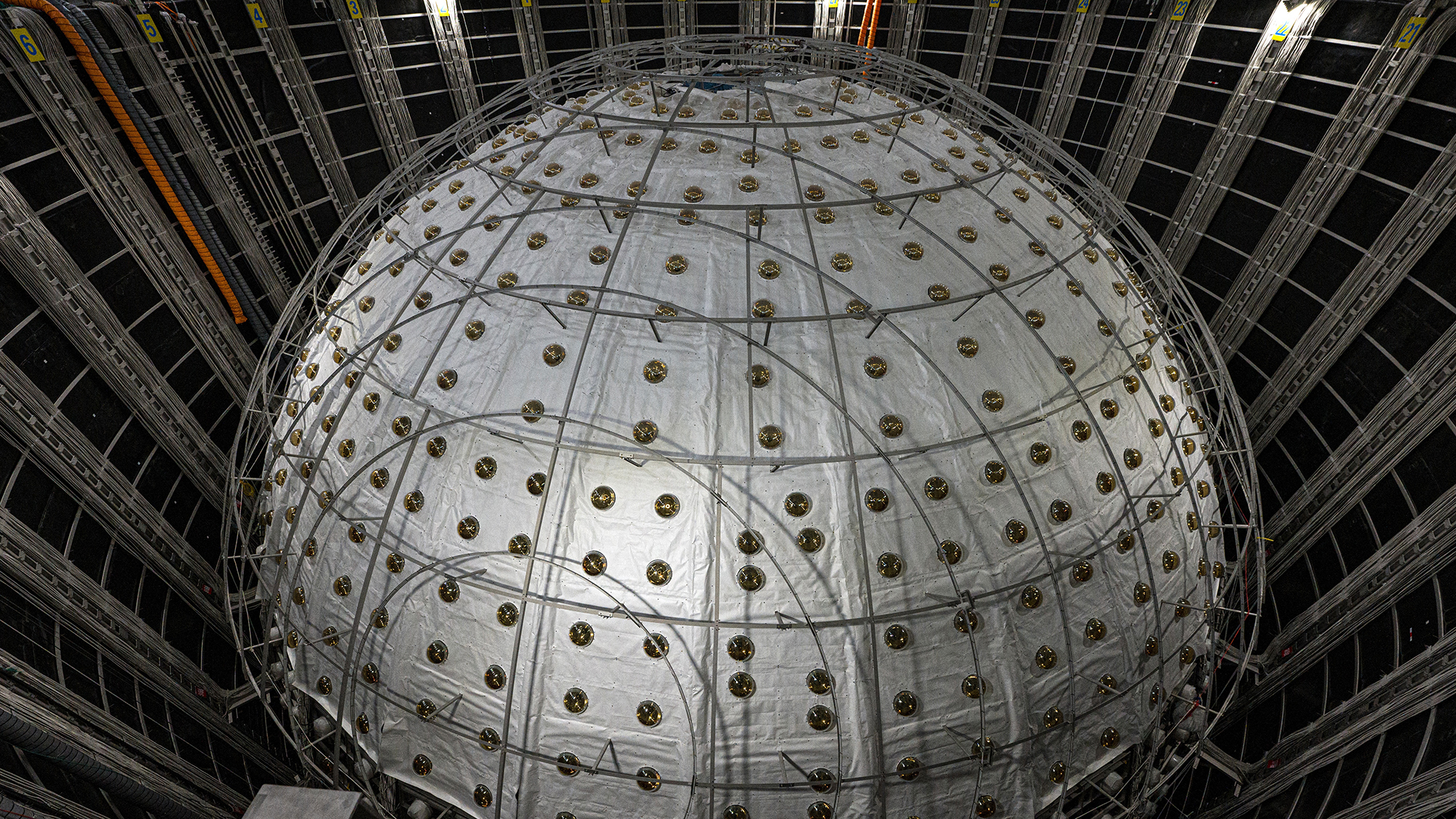

China hopes a giant laboratory 2,300 feet underground is key to beating the US at discovering the secrets of the universe’s most mysterious particles–neutrinos. Slated for completion next year, after over a decade of construction, the roughly $311 million Jiangmen Underground Neutrino Observatory (JUNO) relies on a nearly 115-foot-wide stainless steel and acrylic spherical machine designed to help measure incomprehensibly small subatomic units that move almost at the speed of light. Despite blanketing the universe (100 trillion are believed to pass through your body every second), very little is known about neutrinos and their behavior due how difficult it is to detect them.
If all goes according to plan, however, Chinese physicists intend to make history by uncovering information that will lead to cracking what’s known as the “mass hierarchy” problem. And they want to do it before anyone else.

“[Being] the first means everything, and the second means nothing,” Wang Yifang, JUNO project manager and the director of China’s Institute of High Energy Physics, told the AFP during a facility tour earlier this month.
Experts determined years ago that neutrinos appear to occupy one of three mass states—but their weights from the heaviest to lightest remain unclear. If researchers can figure those out, the new information may help build a more complete standard model of particle physics, as well as expand our knowledge of the inner workings of planets, stars, and supernovas. JUNO’s potential mass hierarchy findings may even force physicists to reconsider established scientific facts, particularly when it comes to quantum mechanics.
“If it turns out that JUNO shows our understanding is wrong, then that would be a revolution,” Patrick Huber, director of American University Virginia Tech’s Center for Neutrino Physics, said on October 17th.
[Related: The Milky Way’s ghostly neutrinos have finally been found.]
Once activated, researchers intend to focus JUNO on neutrinos emitted by a pair of nuclear power plants located about 33 miles away on either side of the subterranean facility. But cracking neutrino mass hierarchy isn’t as simple as measuring their (immensely tiny) weights—experts believe it will take about six years’ worth of experimentation and analysis to finally figure out the answers to the mass hierarchy problem.
During that time, separate, similar projects are expected to begin at facilities like the US-led IceCube observatory located at the South Pole, as well as Japan’s Super-Kamiokande lab. While China currently appears to be ahead of the game compared to their competition, the unexpected twists and turns of physics research means the first ones to find mass hierarchy answers could be anyone—provided you have an extensive working knowledge of some of the universe’s most complex sciences. Access to an underground, gigantic gleaming steel detector orb is probably a good asset, too.